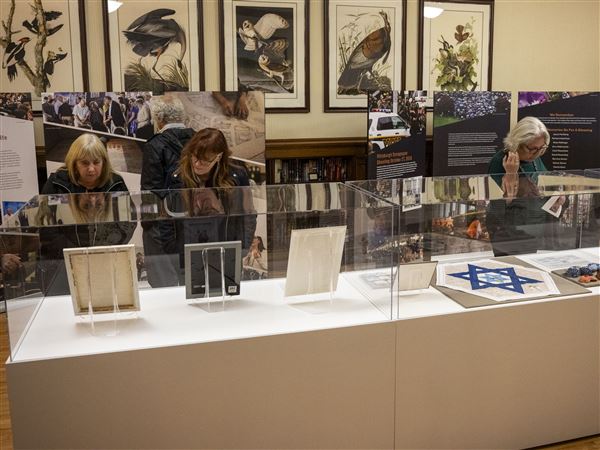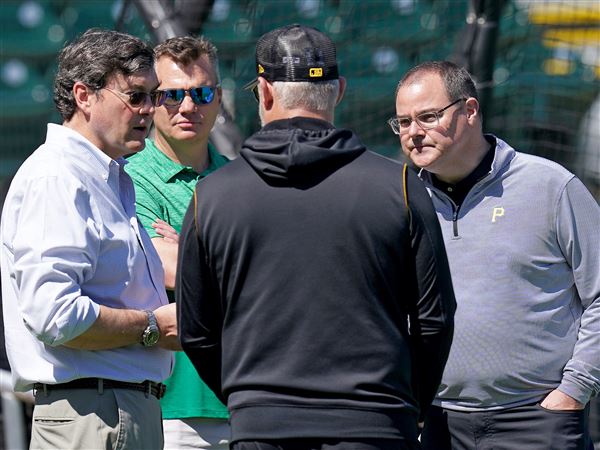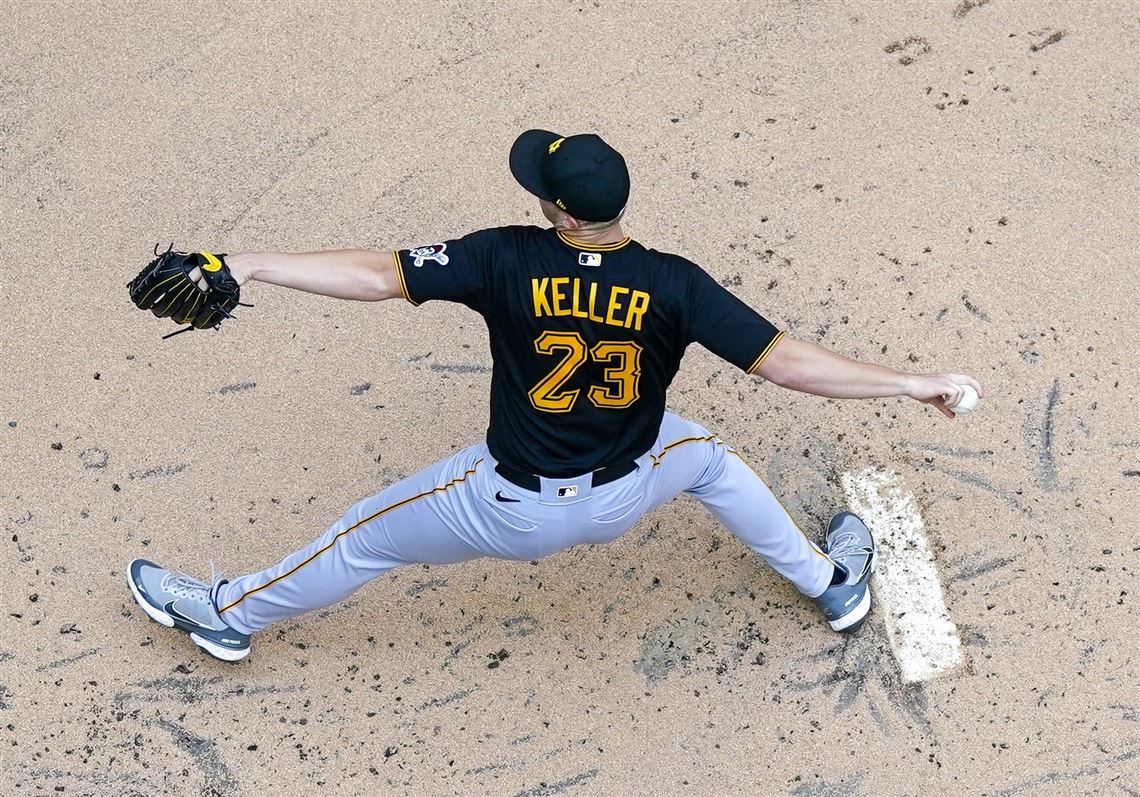SAN DIEGO — Asking pitchers about the ins and outs of their mechanics feels a little bit like conducting a survey on favorite ice cream flavors — the answers are widespread. At the same time, everyone knows ice cream is an essential part to any good meal, the same way sound, repeatable body movements are an integral part of pitching.
A pitcher’s windup or the nuance behind how he delivers a pitch can be a fascinating topic. From the streamlining of some movements to the emphasis of others via biomechanical data or fancy mounds that measure ground force, the push for perfection or some sort of competitive edge is nonstop.
“I’m always working on something,” the Pirates’ Johan Oviedo said. “As a pitcher, I feel like you’re always going to be working on your mechanics, even if you feel good with them.”
Drilling deeper into mechanics produced some fascinating conversations with Pirates pitchers, talks that required several physical demonstrations inside of clubhouses and stuff that speaks to how in-depth these guys can really get.
So, without any further delay, let’s examine what all goes into a pitcher’s windup.
•••
Oviedo’s father, Lazardo, never played professional baseball. But as Johan grew up in Havana, Cuba, Lazardo loved coaching his son and offering support. As Johan tried to emulate pitchers he saw on TV by raising his arms high over his head, Lazardo bristled at the idea.
“I’d go over my head, but my dad would be like, ‘That’s a waste of time. Do that 100 times, and it’ll make you feel tired,’” Oviedo said, laughing.
Johan Oviedo with an immaculate inning. ???? pic.twitter.com/mSIyFq1DOO
— MLB (@MLB) May 24, 2023
If you watch Oviedo, the start of his delivery is one of the simplest on the Pirates staff. It’s a modified stretch position. Step back and go. It works for Oviedo, but Dewey Robinson can remember when pitching mechanics were about more than simplicity or efficiency.
Robinson, 68, works as the Pirates’ senior advisor for pitching development. A former big league reliever, Robinson has spent the past four-plus decades as a coach in a variety of capacities with the White Sox, Astros, Rays and Pirates.
At the start of his career, and for a couple decades before, Robinson can remember the start of a windup being more about rhythm and timing than anything. There was art to it. Limbs flew everywhere. Think about Bob Gibson practically clapping. Or Fernando Valenzuela and Juan Marichal kicking the sky. Luis Tiant’s unpredictable turns.
“There was a lot of rocking and arms moving,” Robinson said. “It’s sort of like the Olympics. Athletes run faster and jump higher. It just evolves.”
While some of the flash and flair has disappeared, there’s still plenty that’s not optional when it comes to effectively and consistently delivering a pitch.
***
Similar to Oviedo, Colin Holderman has one of the more compact and simple deliveries on the team. But it wasn’t always that way. As a kid, Holderman remembers raising his left knee and tucking his front shoulder, pretending to be a right-handed Dontrelle Willis. Or the period in his life where he straightened his leg like Bronson Arroyo.
“Yeah, when I got to pro ball, they cut that out,” Holderman said. “It was too hard to repeat.”
Whether a pitcher starts with his chest pointed at third base or home plate, the next step in a delivery is something everyone interviewed for this story cited: some sort of stack or load, a way to gather the body and any available force before working down the mound.
“It might look different for each guy based on how their hips are aligned,” bullpen coach Justin Meccage said. “But the load phase is pretty consistent.”
“What you’re doing over the rubber, where you’re stacked and in your hips, we call it a hip hinge and load so that you’re really using your lower half,” Robinson said.
As a kid growing up in Massachusetts, Rich HIll’s favorite pitcher to watch was Nolan Ryan, for his aggressiveness and fiery demeanor on the mound. At the same time, Hill couldn’t relate to much else because he threw left-handed.
Easily the biggest pitching mechanics nerd in the Pirates clubhouse, Hill can remember as a kid being told to stay on his toes during the load or stacking phase. It’s an idea he disagrees with now.
“It was always about getting on your toes and driving from there,” Hill said. “But it should have been, ’Sit on your heel.’ Because if you sit on your heel, you’re going to keep your hips underneath you and stay in line going toward a target more so than trying to find an even balance point on your toe.
“It’s tough when you start doing it. When you first start sitting on your heel, you almost feel like you’re going to go backwards.”
You’ll often hear pitchers talking about getting in their glutes versus using their quads, and it’s a point Robinson thinks is essential to this entire discussion. So much so that, post-knee replacement, he hopped up to demonstrate exactly what he meant.
Robinson explained having the knee of his back leg inside of his toe, forcing the body to stack weight in the glutes, not the quads, because it can support more.
“I can hang in this position as I’m going down a lot longer than here,” Robinson said, comparing the two. “Then I have to plant, and I get off my back leg.”
•••
Assuming there’s no Willis- or Arroyo-style leg lift — on the Pirates there’s not — the next checkpoint prior to the actual push off and drive down the mound shifts to the upper body and how pitchers separate their throwing hand from their glove.
Growing up in Iowa, Mitch Keller never did a ton of formal pitching training. Much of what he learned came from his older brother, Jon, who played minor league ball for the Orioles, and figuring out what felt good. One of those things was what can be described as a wild or open front side.
When Keller would pull the ball out of his glove, he’d reach way out, like he was peeling back a curtain or trying to shove a group of people out of the way. It didn’t take long before the Pirates sought to scrub the extra movement.
Pitching coordinator Scott Mitchell had Keller change during one of his first instructional leagues, keeping the pitcher’s front side more compact, his glove closer to his body.
In Keller’s first season of affiliated ball, he had a 2.35 ERA in 24 starts, walking just 19 and striking out 138 in 130 1/3 innings for what was then High-A Bradenton. The quieter front side — something Keller keeps with him to this day — was arguably the biggest reason why.
“That helped so much,” Keller said. “I used to be super high in high school to right here [tucking his arm left tight]. It’s just kind of found its sweet spot. When things are off, it’s usually because I start getting too aggressive with my front side.”
The separation before arm stroke is also something that makes David Bednar unique. While the Pirates worked to make Keller more compact, Bednar has always been different because of how elongated these movements are for him.
Bednar has one of the longest arm strokes you’ll see. A growing trend in pitching has been to shorten the arm path — Jameson Taillon and Joe Musgrove began doing this in Pittsburgh — but Bednar said nobody has really ever tried to get him to change.
Atop his player page at MLB.com, it’s right there: perfect T-formation, arms stretched wide, his right wrist turned the other way and his palm facing the first-base line.
“It doesn’t make sense,” said the much-more-compact Keller, chuckling. “I’m like, ‘How do you throw that hard like that?’ But it’s what makes him who he is.”
Keller’s comments elicited a laugh from the Pirates closer. When he thinks about clean mechanics, Bednar joked that his younger brother Will probably got that gene, although David shouldn’t sell himself short.
Keller also isn’t the first one to give the two-time All-Star grief over his extended arm action.
“It’s always been just unique enough,” Bednar said. “It helps me be on time with that arm path. Nobody has tried to shorten it up or anything like that. I never thought anything of it until I got to college. Some of my buddies would ask, ‘Why you throwing so goofy?’ I was like, ‘I don’t know? It’s how I throw, man. Get off of me.’”
David Bednar's 2Ks in the 9th.
— Rob Friedman (@PitchingNinja) April 23, 2023
The Renegade shuts the door.
Pirates pitching continues to be ???? pic.twitter.com/gKbwJ45MnX
•••
Hill likes to think of pitching and the mechanical minutiae in terms of other sports, like figure skaters starting with their hands out wide, then pulling them in as they go faster, or those who throw darts and the relationship between the arm and the hand.
While Robinson said major league coaches remain hesitant to tweak a pitcher’s arm path, knowing it’s ingrained and any substantive change could cause bigger issues, there’s also an important working relationship at play.
In Hill’s mind, it’s all about keeping equal distance — no matter what — between his fingertips and eyes. And the more subtle the movement through all points of delivery, the better.
“When you start to see a separation of your hand and head, you see inconsistencies of where the ball is going,” Hill said. “When you keep your hand and head together, again, your release point is going to be more consistent. You’re going to be in the zone a lot more.”
This remains true for any pitch at any arm slot, which Hill proceeded to demonstrate by dropping down and keeping his body in line.
This included, of course, a full delivery and “foot strike,” as Hill called it: completing the entire process by landing firmly on the slope, the lower half moving in concert with the torso and the arm/shoulder.
Grips and finger pressure are the final two checkpoints in the process, items he and others can manipulate based on pitch, count and location. Yet for them to matter, Hill pays a ton of attention to his head and chin in relation to his elbow and hand.
And while Hill and others can dial up any number of combinations based on what they’re throwing and where, it’s important that the actual delivery of the pitch doesn’t disrupt head movement.
Mitch Keller, Wicked 83mph Slider...and Sword. ⚔️ pic.twitter.com/7apVuAgtQz
— Rob Friedman (@PitchingNinja) July 16, 2022
“The bigger the movement, the harder it is to maintain your delivery,” Hill said. “If your release point is off by just a couple of inches here, that’s going to make a tremendous difference by the time the ball gets to the plate.”
It’s also not just relative to a pitcher’s arm. When Meccage pitched in the minor leagues back in the Yankees system in the early 2000s, nobody knew much about external or internal hip rotation. How some pitchers simply weren’t wired to move a certain way.
Now, through sport science and information gained via Edgertronic cameras (and much more), the Pirates analyze how players can best and most efficiently move their bodies down the mound.
The same is true for Robinson and what he views as the next frontier for Pirates pitchers: smart mounds. Made by NewtForce, they track what kind of force pitchers are generating — whether it’s early, late or on time. It analyzes where, when and how a pitcher lands. When combined with video, the detailed analysis is endless.
Ditto for the pursuit of perfection.
“So often we would put everybody in a box,” Meccage said. “Now, through learning more about the body, it shortens those frustrating times as a coach of, ‘Why can’t this guy do this?’ The players get frustrated, too. But all of this stuff has helped us find solutions a lot quicker.”
Jason Mackey: jmackey@post-gazette.com and Twitter @JMackeyPG.
First Published: July 26, 2023, 9:30 a.m.
Updated: July 26, 2023, 4:56 p.m.






















